legacy of mesoamerica exam 2- indigenous writing
1/24
There's no tags or description
Looks like no tags are added yet.
Name | Mastery | Learn | Test | Matching | Spaced |
|---|
No study sessions yet.
25 Terms
Pre-Hispanic codices
• Fifteen codices in total survive to the present
• Bark paper does not preserve in the tropics
• Often survived because they were taken to Europe as curiosities
• Four Maya codices
Dresden Codex
Madrid Codex
Paris Codex
Grolier Codex
• The Borgia Group (Nahuatl-speaking areas, south and east of Mexico City)
The Codex Borgia
• The Mixtec Codices
Dresden Codex
maya codex
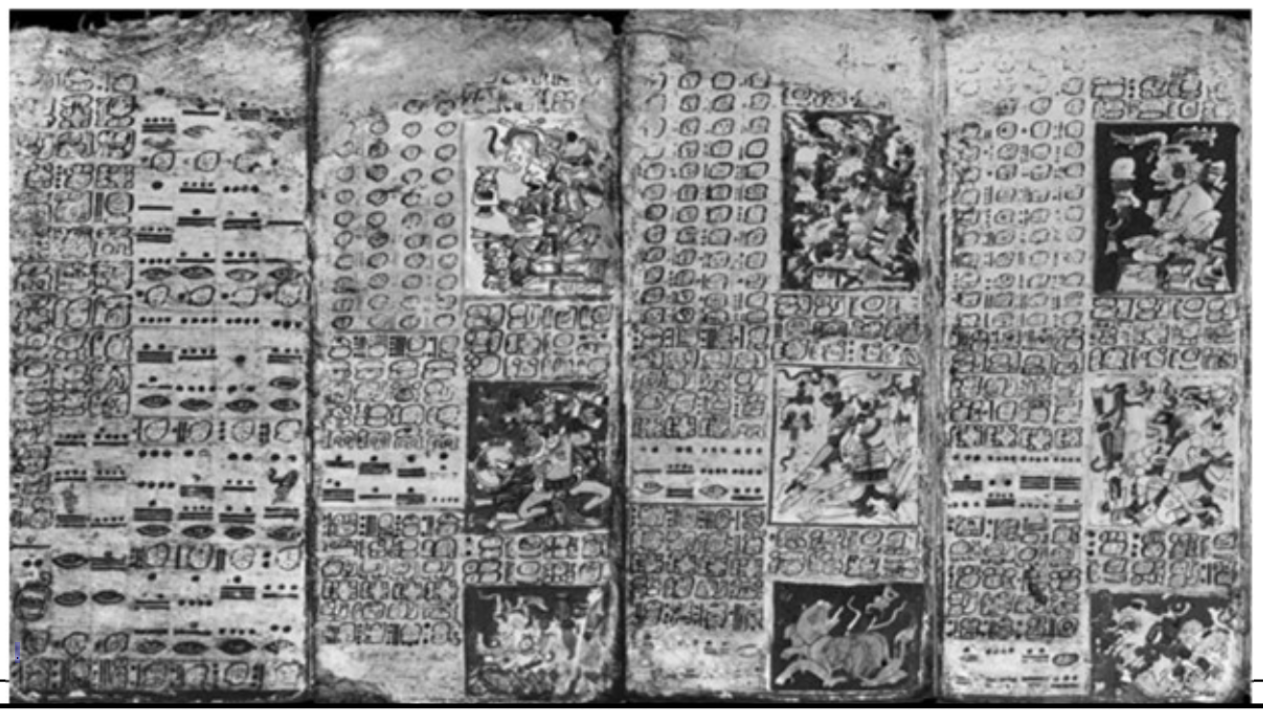
Madrid Codex
maya codex

Paris Codex
maya codex
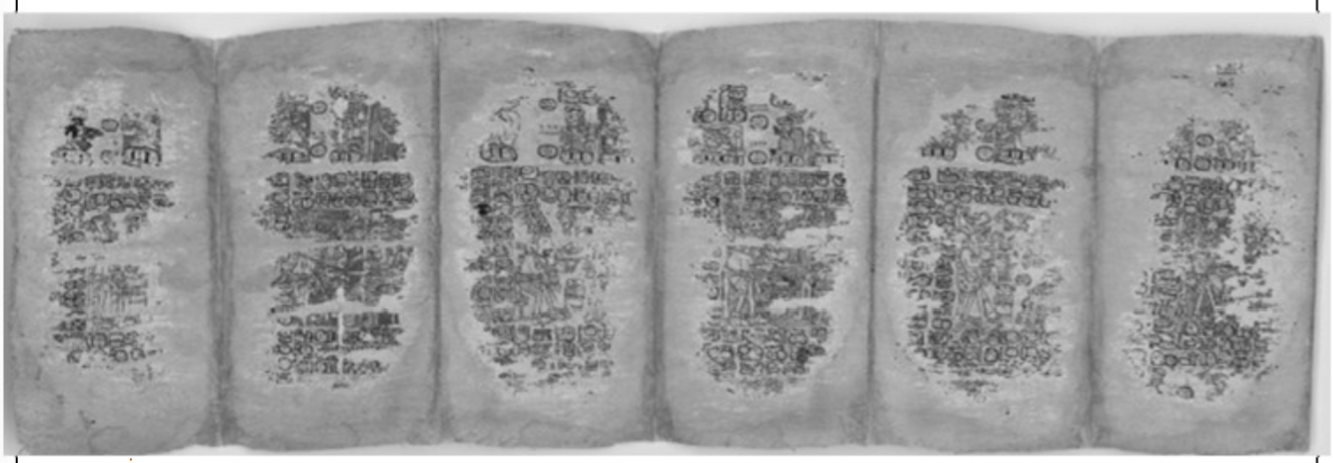
Grolier Codex
maya codex
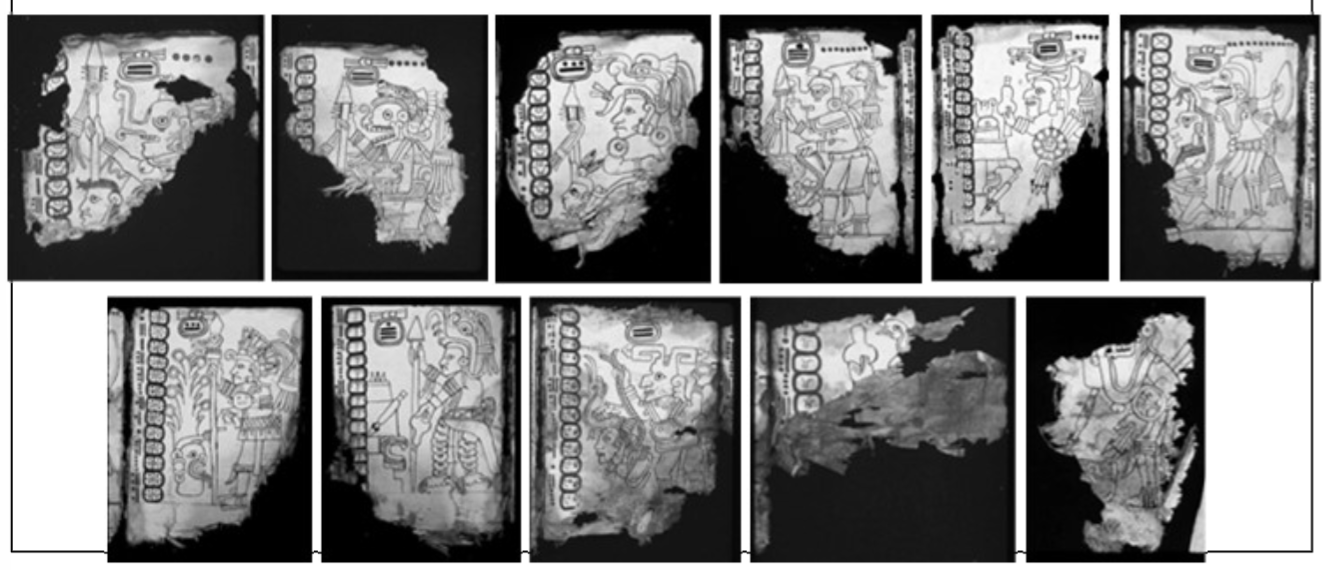
The Codex Borgia
• The Borgia Group (Nahuatl-speaking areas, south and east of Mexico City)

The Mixtec Codices
Colonial codices
• Four major changes occurred during the Colonial period
• Ritual and divinatory codices are rarely produced, or must be produced in secret, except where commissioned by Spanish priests
• Alphabetic glosses are added to some images, and eventually replace glyphic texts
• Some native artists incorporate stylistic conventions of European art into illustrations
• New genres of pictoral manuscripts are created under European sponsorshi
Titulos
Genres of codices
• Historical accounts of a particular community (sometimes called “titulos”
Often from Central Mexico
Codex Aubin (see textbook)
Lienzos
Genres of codices
Maps (Lienzos)
• Often prepared for use in court cases over community land boundaries or access to natural resources
• Pictoral art that combines history and geography
Ethnographic codices
Genres of codices
• Ethnographic codices
Mostly from Mexico City area
Collaboration between Spanish Friars and Indigenous artists
Codex Mendoza
Florentine Codex
Codex Mendoza
• Commissioned in the 1540’s by the Spanish Viceroy
• 3 main sections:
• A history of the Mexica rulers and their conquests
• Tax records for individual provinces
• Social life of Mexica people from birth to old age
… mixtec codex? find out
Codex mendoza - history of mexica rulers
• This page shows many warfare-related activities related to Mexica imperial expansion
The execution of local rulers (“caciques”)
The execution of merchant-spies
Merchants on an imperial mission (serving as diplomats).
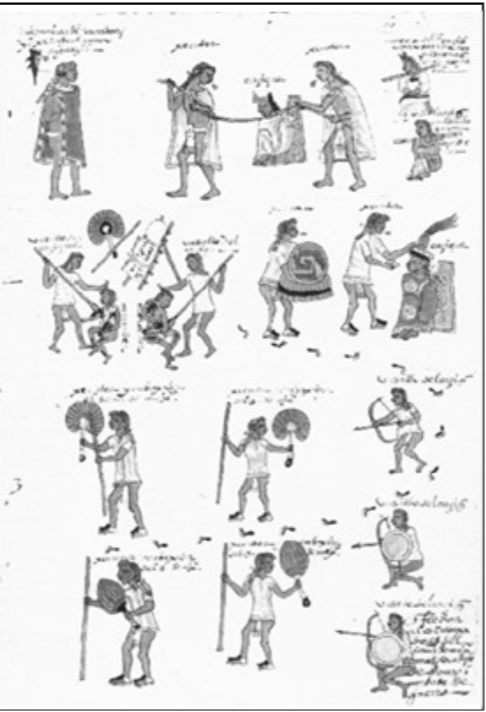
codex mendoza- social life
-Mother addressing child in cradle
-midwife prepares the baby for a ritual bath and naming ceremony.
-Symbols invoked for a boy consist of arrows and craftspersons' tools.
-Symbols invoked for a girl are a broom, a spindle, and a basket.
-Three boys (at right) call out infant's name
- Gender roles were indoctrinated through teaching, ritual
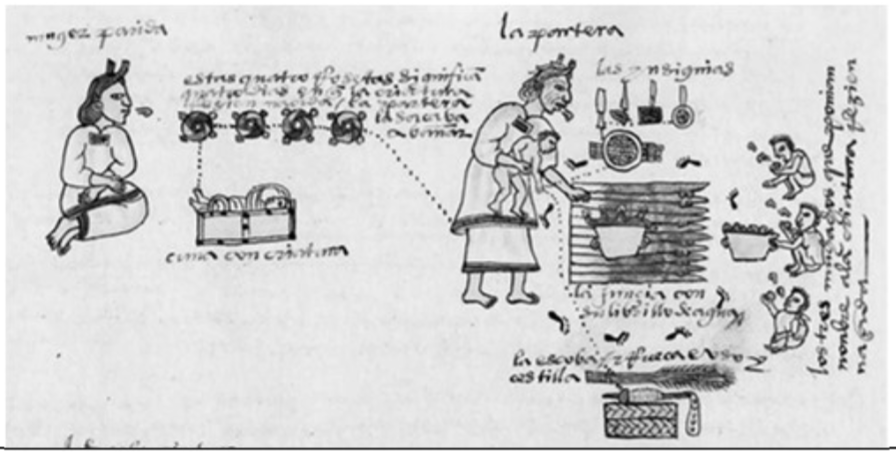
Florentine Codex
• Bernardino de Sahagún
• Franciscan friar, attended the University of Salamanca, recruited to New Spain in 1529
• Franciscans such as Sahagún thought it was important to learn native languages and religious beliefs to help with conversion efforts
• From 1545 to 1590, he compiled an encyclopedia of Nahuatl culture, called the Florentine Codex
• Authored in Spanish and Nahuatl, with significant input from his students: the sons of elite Aztec nobles who were sent to the monastery for religions instruction
• Originally called: Historia general de las cosas de Nueva España
• 12 books and over 2,000 illustrations
• Longest text in a native language in the Americas
… moxtec codex? find out
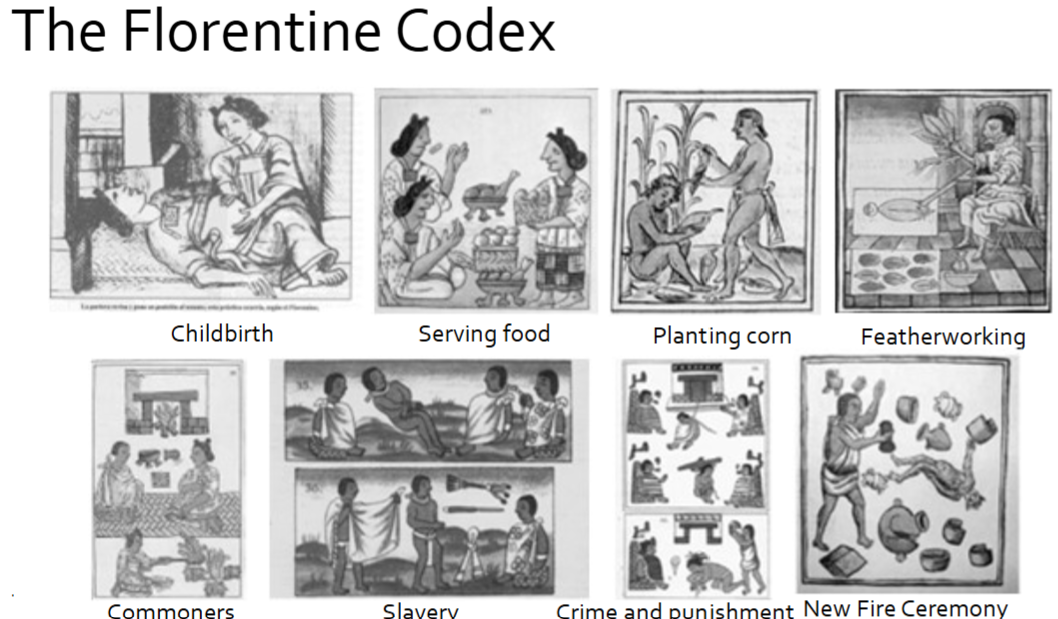
Indigenous and Mestizo Historians
• Wrote in both Spanish and Indigenous languages
• Followed many patterns and conventions of European histories
• Often focused on political and military history
• Served to both preserve information about the past, and seek legitimacy in the present
• Often downplayed practices such as human sacrifice
Codex Chimalpahin
Anales or Codex Chimalpahin
• Domingo Francisco de San Antón Muñón Chimalpahin Quauhtlehuanitzin (Chimalpahin)
Wrote 8 historical chronicles, a diary, and short writings in Nahuatl
Also wrote claims and proofs of nobility as a guide for the Spanish viceroyalty in granting priviledges to Indigenous nobles
Most of his writings are from 1600-1620
From Chalco, near Mexico City
Worked in Mexico City as a sancristan for a small churc
Don Fernando de Avila Ixtlilxochitl
• Mestizo historian from Mexico City
Father and maternal grandfather were Spanish
Through his mother’s line, he was descended from Ixtlilxochitl, a lord of Texcoco who supported Cortes, and Nezahualcoyotl, 15th century ruler of Texcoco and famous poet
• His family had a large collection of pictoral manuscripts
He used them to write several Spanish-language chronicles
• His writings argue in favor of the decisions of Texcoco’s rulers to support the Spanish and glorifies his ancestor, Nezahualcoyotl
• Most famous works:
Historia Chichimeca
Codex Ixtlilxochitl
Historia chichimeca
one of don fernando de avila ixtlilxochitl’s most famous works
Codex Ixtlilxochitl
one of don fernando de avila ixtlilxochitl’s most famous works
The Books of the Chilam Balam
• Chilam Balam = “Jaguar Priest”—legendary author/priest/prophet, the books claim to be a transcription that represent his words
• Nine books exist, all associated with small towns in northern Yucatan
• Mostly written in the late 17th and early 18th century, but some sections may have been written in the 16th century
• Some contain history, some contain calendrical prophecies, some contain medical treatises, some contain traditional prayers
• Most famous examples are from northwest Yucatan:
Chilam Balam of Chumayel
Chilam Balam of Mani
Chilam Balam of Tizimin
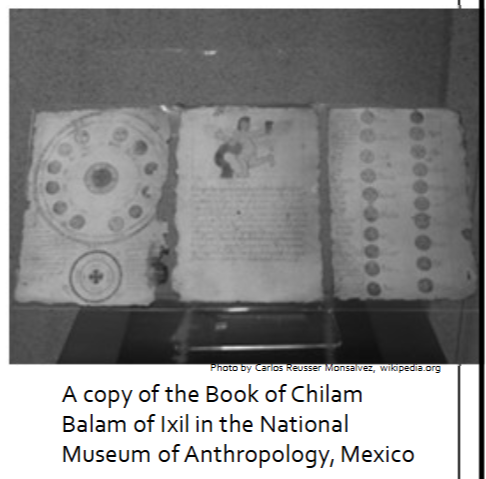
Religious texts
Other types of documents
• Religious texts
Songs and poems
Devotional texts
Morality play
Wills and testaments
Other types of documents
• Wills and testaments
Insight into Indigenous views on property and inheritance
Legal documents and court cases
Other types of documents
• Legal documents and court cases
Land grants, land and property disputes, petitions to the Spanish Crown and other Colonial authorities, complaints against encomenderos and priests, letters, tax records
Dictionaries
Other types of documents